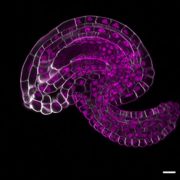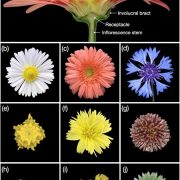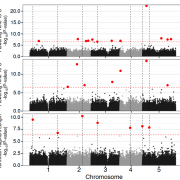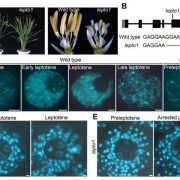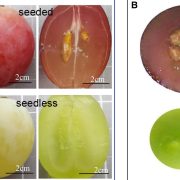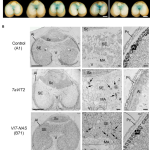Preferential egg cell fertilization Arabidopsis double fertilization
Double fertilization, in which one sperm cell fertilizes the egg cell to form the embryo, and another sperm cell fertilizes the  diploid central cell to produce the triploid endosperm, is a hallmark of angiosperms. Li et al. addressed a long-standing question: if only one sperm cell were present, would it have an equal probablity of fertilizeing the egg or central cell, or would one of the two female cells be fertilized preferentially? To address this, the authors first had to work out how to generate pollen with only a single sperm cell, which they did with some clever genetic tricks (complementation-based fluorescence-labeling method to obtain cdka;1 pollen, followed by selection for a single sperm-like cell). Pollination with these modified pollen grains led almost exclusively (99.5%) to the formation of ovules with fertilized egg cells but almost no (0.5%) evidence of sperm nuclei within the central cell. When pollen was provided at a large excess relative to the number of ovules, central cells were fertilized, indicating that although these sperm cells can fertilize the central cell, they prioritize the embryo cell. How this preferential fertilization occurs remains to be seen. (Summary by Mary Williams @PlantTeaching) J. Integr. Plant Biol. 10.1111/jipb.13370
diploid central cell to produce the triploid endosperm, is a hallmark of angiosperms. Li et al. addressed a long-standing question: if only one sperm cell were present, would it have an equal probablity of fertilizeing the egg or central cell, or would one of the two female cells be fertilized preferentially? To address this, the authors first had to work out how to generate pollen with only a single sperm cell, which they did with some clever genetic tricks (complementation-based fluorescence-labeling method to obtain cdka;1 pollen, followed by selection for a single sperm-like cell). Pollination with these modified pollen grains led almost exclusively (99.5%) to the formation of ovules with fertilized egg cells but almost no (0.5%) evidence of sperm nuclei within the central cell. When pollen was provided at a large excess relative to the number of ovules, central cells were fertilized, indicating that although these sperm cells can fertilize the central cell, they prioritize the embryo cell. How this preferential fertilization occurs remains to be seen. (Summary by Mary Williams @PlantTeaching) J. Integr. Plant Biol. 10.1111/jipb.13370


